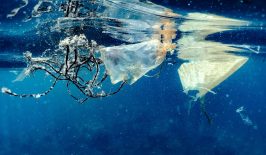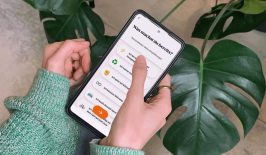Take a look at the clothes you’re wearing. While you might assume your t-shirt is made of cotton, or your jeans made of denim, there’s a high chance other materials have been mixed in too. With 69 percent of textiles made of synthetic materials as per the Changing Markets Foundation, polyester blends are very common in the fashion industry.
When your clothes start forming holes you can no longer patch up—and your Vinted adverts are getting zero interest—it might be time to take them to a textile recycling bank. But with 87 percent of textiles unable to be recycled according to the Ellen MacArthur Foundation, there’s a chance that donating your clothes won’t be the positive climate action you’d hoped—you might end up simply contributing to fashion’s waste problem. However, thanks to new research published in Science Advances, an innovative recycling method offers a fresh way for clothes made from mixed fabrics to have a new life.
It takes 15 minutes to turn mixed fabrics into molecules
If you send clothing made from natural textiles to a recycling bank, it’ll be shredded or pulled back into fibres. Then, these fibres will be spun into yarn, ready to be reused in another piece of clothing. As for clothes made from synthetic fibres, they are shredded, granulated and turned into pellets. These pellets are melted and turned into new fibres, ready to be made into clothes. But if clothes are made from a mix of fabrics, they can’t be recycled using either of these techniques.
The new recycling method works differently. It begins with adding a solvent to fabric that breaks polyester’s chemical bonds. In just 15 minutes, it can turn any combination of spandex, nylon, cotton or polyester into building block molecules. These molecules can then be turned into new fabric or even used in other industries to create a vast array of products from food packaging to fishing nets.
While current recycling banks may spend time sorting textiles in order to maximise their recycling potential, this new method negates the need for this costly and time-consuming process. Although researchers have stated that “further improvements [to the method] will be necessary,” the potential benefits of recycling blended fabrics are undeniable.
The new method sparks hope for the future of the fashion industry
The researchers believe their method has “the potential to achieve a global textile circularity rate of 88 percent.” However, it’s crucial not to lose sight of the importance of reducing our fashion consumption. Instead of having a mindset that clothes can simply be recycled when you’re done with them, buying less and buying second-hand are the most valuable ways to negate the harm the fashion industry is having on our planet.








